The Founding of Westbrook Seminary
The Westbrook College Campus had its beginnings in September 1830 when the Kennebec Association of Universalists resolved that a classical literary institution whose purpose was the promotion of “piety and morality and the education of youth” be established at Steven’s Plains in Westbrook.
A campus history overview with an emphasis of the institution’s role in women’s education, Westbrook Seminary: Educating Women is available at the Maine Memory Network.
Initial Charter
The charter for Westbrook Seminary was signed by Governor Daniel Smith on March 4, 1831. The campus’s original eight acres were a gift to the Association from Zachariah Stevens and Oliver Buckley. Three years passed before the first class was held on June 9, 1834 in the newly constructed Seminary Building, which is now called Alumni Hall.
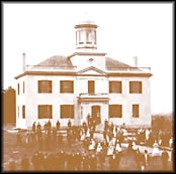
First Principal
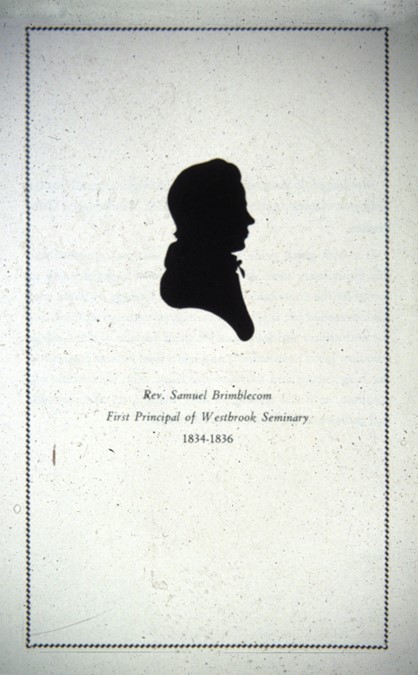
At its inception the institution was called Westbrook Seminary; in the United States in the 19th century the terms “college” and “seminary” and “institute” were commonly used interchangeably.
When the first term of class began in June 1834, the Reverend Samuel Brimblecom of Harvard’s class of 1817 was the first principal. Tuition was three dollars for “common English studies” and four dollars and a half for “languages and higher branches of the mathematics.” Male and female students were admitted to equal privileges, and boarded in neighboring homes for a dollar and a quarter a week for women, and a dollar fifty for men.
1857
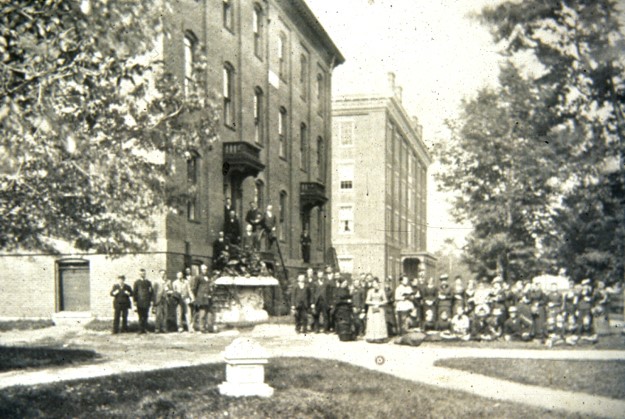
During the 1850s, Westbrook Seminary grew and prospered under the leadership of Dr. James P. Weston. Growth in enrollment required dormitory space, and Goddard Hall, named for major donor Thomas A. Goddard of Boston, became the second building on campus in 1857. Goddard Hall provided living quarters for both male and female students, the proprieties being subtly observed by the construction of a solid brick wall from cellar to attic.
1886

During the last decades of the nineteenth century, Westbrook Seminary catalogs prescribe strict standards of conduct for students’ behavior in and out of class. One reads, “students must refrain from scuffling and all improper conduct in the halls and rooms of the seminary building.” Another states that the Seminary is “not a suitable one for those who are idle, wayward, or adverse to study.”
In 1886 the girls of Westbrook Seminary protested the severity of the regulations. The young ladies informed Dr. Weston that for one week they intended to disregard those rules of conduct that they considered most restrictive, even to the point of walking, in daytime, as far as Morrill’s Corner without escort.
1896

In 1863, Westbrook Seminary was empowered by an act of the state legislature to “. . . confer upon all who shall satisfactorily complete such course, the collegiate honors and degrees that are generally granted by female colleges.” For a time the Seminary conferred two special degrees, the L.L.L., or Lady of Liberal Learning, and the L.E.L., Lady of English Learning.
By the 1890s, Westbrook Seminary and Female College offered four courses of study: a three-year English course, and four-year programs titled Scientific, Ladies’ Classical, and Preparatory.

1900s
By the turn of the century and thereafter, men’s athletics began to play an increasing part in school affairs everywhere, and Westbrook Seminary was no exception. Student records during the early years of the century suggest that in some cases athletic ability eventually became more of a criterion for admission than academic promise. More than one young gentleman, “left after six weeks,” and one who stayed the whole term, “forgot to take final exam.” Westbrook did produce, however, some splendid athletes of whom, perhaps, the most eminent was Del Bissonette, later a major league baseball player and manager of the Boston Braves.
1920

During the first quarter of the twentieth century it became obvious that Westbrook Seminary must adjust to changing concepts of education. In 1914, Clarence P. Quimby became Westbrook Seminary’s president. It was his conviction that Westbrook should abandon its co-educational character, concentrate on the education of young women and assume the junior college function. Ahead of his time and unable to implement his plan, Mr. Quimby left in 1920. Within five years “the increasing difficulties of co-education and the financial strain of making co-educational prices meet 20th century ‘prep’ school demands” convinced the Trustees to authorize the addition of a two-year women’s curriculum.
1929

In 1925 the last co-ed Westbrook Seminary class graduated, and Westbrook embarked on its new career as junior college under the leadership of Miss Agnes Safford. The Legislature in 1929 changed the legal designation of the institution to Westbrook Seminary and Junior College. However, the ensuing stock market crash and resulting stagnation affected education as it did industry and business. Despite the commitment of Miss Safford and an excellent faculty, enrollment dropped, and indebtedness increased. Miss Safford died in office in 1932, and the Trustees, still devoted to the junior college idea, started a search for a new leader.
1933-1958
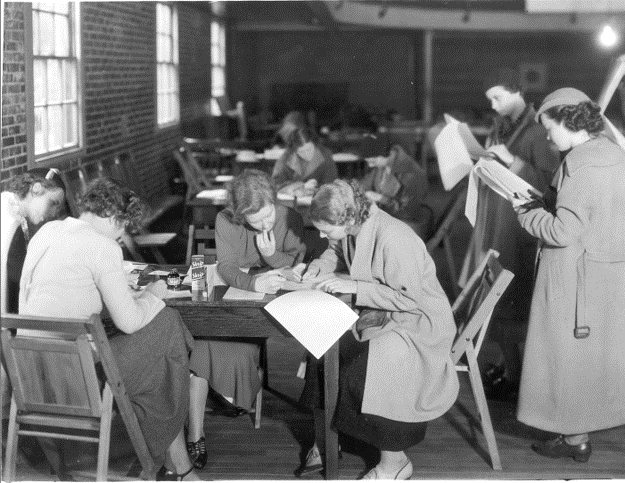
Dr. Milton D. Proctor, a New York state native, served as president from 1933-1958. Under his tenure Westbrook Junior College was one of the great success stories in New England higher education in the 1930s and 1940s. Enrollment increased from 27 in 1933 to 370 in 1947; and new buildings were added on College Street and Stevens Avenue for senior students who lived in small home-like residences supervised by housemothers or faculty.
In 1952 a new large multi-purpose building was erected and dedicated to Milton D. Proctor. The dedicatory plaque says of him, in part, that he “restored to usefulness this historic institution of learning.”
1958-1970
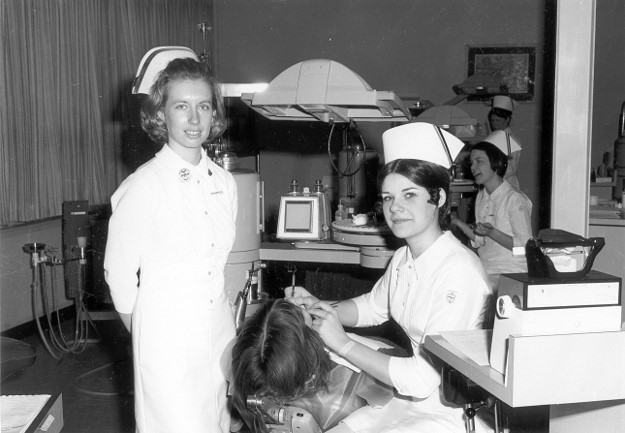
In the fall of 1958, after twenty years as a university academic dean, Dr. Edward Y. Blewett became president of Westbrook Junior College. During his tenure, with the generous assistance of the W.K. Kellogg Foundation, a Department of Dental Hygiene was established. Westbrook Junior College became the first residential junior college in the United States to offer a dental hygiene degree. With the assistance of the Bingham Associates Fund and the Alexander Foundation Trust, a Department of Nursing Education was established. As programs were added and enrollment moved beyond 500, the junior college constructed six new buildings between 1961 and 1967.
1970s
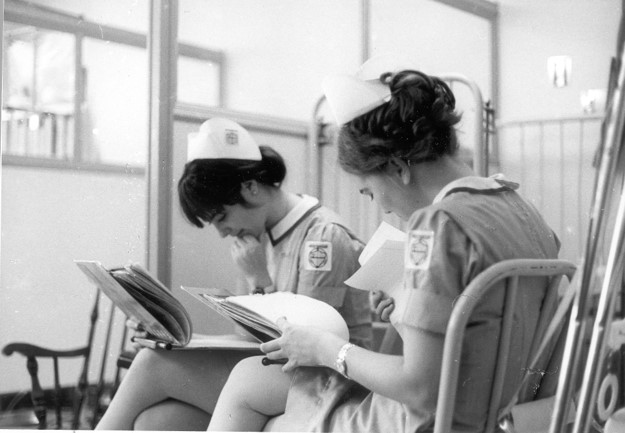
On July 1st 1970, Westbrook Seminary and Junior College entered a new stage of educational service with a new name, Westbrook College, granted by the special session of the 103rd Legislature—a name much less restrictive and more descriptive of its function. And on July 1st 1970, Westbrook College inaugurated a new president, Dr. James Franklin Dickinson (1970-1977). Looking toward the future and prompted by federal legislation that prohibited the granting of federal funds to colleges that practiced gender discrimination, the College returned to co-education. In the fall of 1973, male students were again enrolled.
1986

Under the leadership of President Thomas Courtice (1977-1986) baccalaureate continuing education programs, offered in the evenings and on weekends, exploded. The former 1900 McArthur Gymnasium, with new construction and renovation, became the Josephine S. Abplanalp ’45 Library. The Gothic church, originally constructed in 1867, and used as a library from 1970 to1986, became the Eleanor DeWolf Ludcke ’26 Auditorium. Both were dedicated in 1986.
1996

President William D. Andrews (1987-1996), Westbrook College’s 34th president, guided the College’s transition from associate degree programs to baccalaureate degree programs. The Beverly Burpee Finley ’44 Recreation Center, which opened in 1990, brought sports and athletic opportunities back to the campus. Despite new programs and buildings, the College found itself caught in national trends of enrollments that especially hit small colleges hard. Seeking to bring Westbrook College into the 21st century, the Trustees voted to merge with the University of New England in Biddeford. On July 31st 1996, the merger took place under the original 1831 Westbrook College charter.
Westbrook College Campus
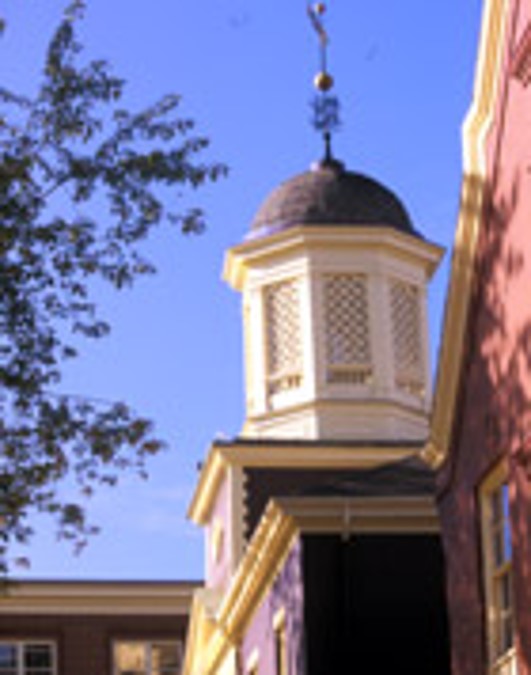
Under the leadership of President Sandra Featherman, the Westbrook College Campus of the University of New England has become a center of national excellence in health professions education. The current focus on interprofessional and experiential education, and recent and ongoing campus renovations, ensure a proud future for an institution that has enriched the lives of students, alumni, neighbors and friends for the last 194 years.

